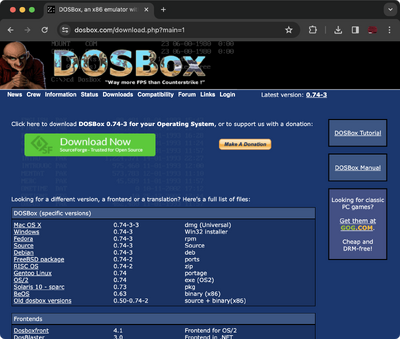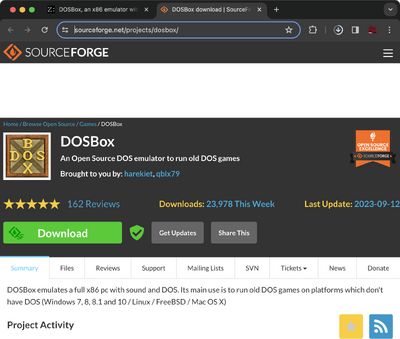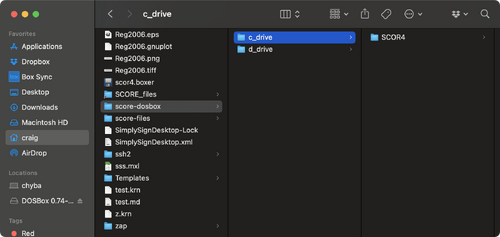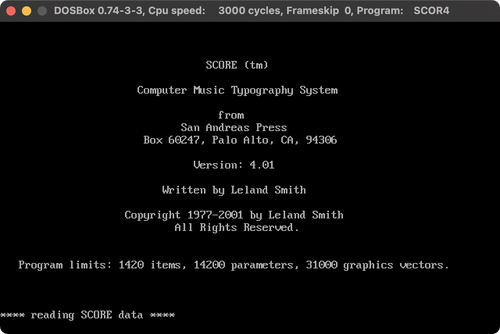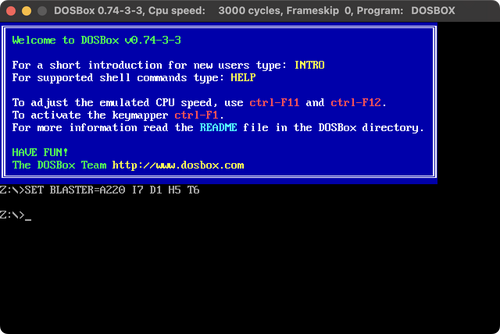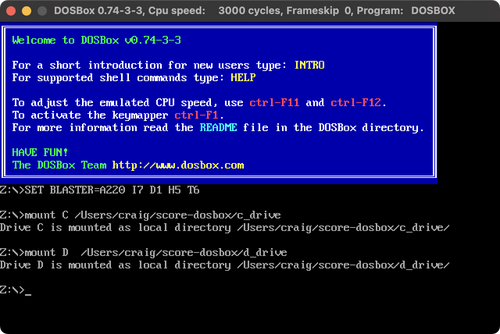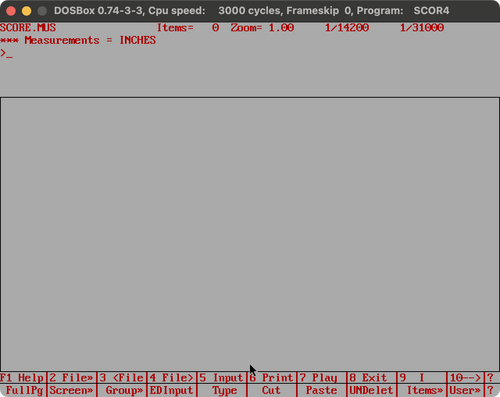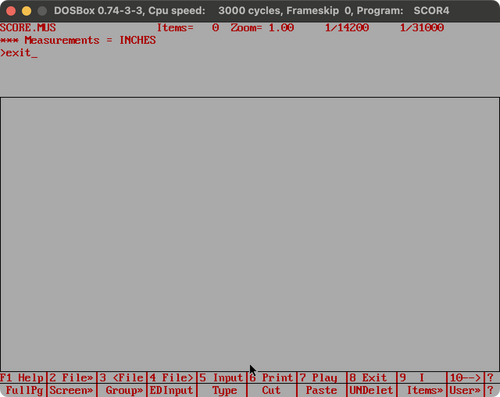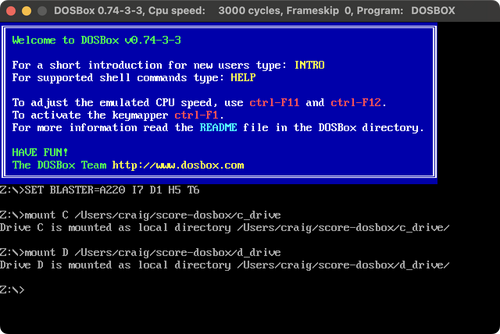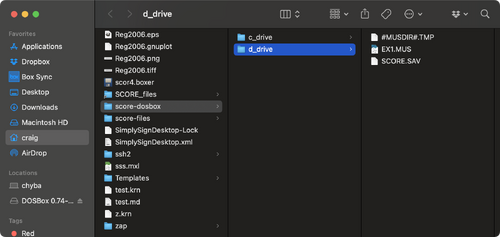Difference between revisions of "Using SCORE in DosBox"
Jump to navigation
Jump to search
| Line 81: | Line 81: | ||
(This should be in the "[autoexec]" options region.). After adding this, the mounting commands will be done automatically when opening DosBox: | (This should be in the "[autoexec]" options region.). After adding this, the mounting commands will be done automatically when opening DosBox: | ||
| − | + | [[File:dosbox-mount-auto.png|500px|thumb|center|Automatic mounting of C: and D: drives in DosBox.]] | |
== Continue == | == Continue == | ||
Revision as of 06:29, 13 February 2024
Contents
Windows installation
Installation should be nearly identical to installing in MacOS, so tell me if there are any significant differences.
MacOS installation
Download and install DosBox
- Install DosBox for Mac OS X version 0.74-3-3 dmg (Universal) from the download page of DosBox: [1]
- The Mac OS X link takes you to sorceforge [2] to download the application:
- Open the downloaded dmg file:
- The following files will be displayed. Copy the DOSBox.app program to "/Applications" or "~/Applications".
Download SCORE files
- Unzip the SCORE zip file and store where you want it to be stored. It should be able to go anywhere such as in your home directory, the Desktop, or a class-related folder. I would avoid having the full path contain any spaces, which could potentially cause problems. I place it at "/Users/craig/score-dosbox". (i.e., in the home directory).
- Run score by typing without quotes: "c:\scor4\scor4.bat". You should then see the SCORE splash page:
Run DosBox
- Note that there may be access permissons required the first time DosBox is run (so accept any security permission requests).
- Open the DosBox app (double click on "/Applications/DOSBox.app" or put in your Dock). You should see this view after a brief splash page:
- Make note of where you installed the score-dosbox directory/folder. There are two directories that need to be connected to DosBox as the C: and D: drives. For me the C: drive is /Users/craig/score-dosbox/c_drive, and the D: drive is /Users/craig/score-dosbox/d_drive.
- You need to type these two commands in DosBox:
mount C /Users/craig/score-dosbox/c_drive
and
mount D /Users/craig/score-dosbox/d_drive
- Now you can start score with the command:
c:\scor4\scor4.bat
and you should see the SCORE splash page:
Press the space bar (or any key) to skip the splash page faster.
- You will end up in the SCORE editor after the splash page is closed:
- You can type "exit" (then the return key) to close score and go back to the initial DosBox window:
Preference file
- You can automatically mount the C: and D: drives by adding these lines at the bottom of "/Users/craig/Library/Preferences/DOSBox 0.74-3-3 Preferences":
mount C /Users/craig/score-dosbox/c_drive mount D /Users/craig/score-dosbox/d_drive
(This should be in the "[autoexec]" options region.). After adding this, the mounting commands will be done automatically when opening DosBox:
Continue
- Go to SCORE user input to start entering the first SCORE exercises.
- Also refer to the SCORE survival guide for step-by-step instructions on how to enter the exercises.
- When you save files, they will be placed in the /Users/craig/scores-dosbox/d_drive directory (at least for me). You can view the files in the Finder at the same location:
The files "#MUSDIR#.TMP" and "SCORE.SAV" are temporary files that SCORE uses. The file "EX1.MUS" is a binary file that stores the music notation prepared in SCORE.
- You can create readable ASCII versions of MUS files in SCORE by using the PMX command. Also you can use a command-line tool to convert binary MUS files into ASCII PMX (parameter maxtrix files), both show the internal format of the musical data which contain rows of numbers, each row representing a particular musical object on the page.
